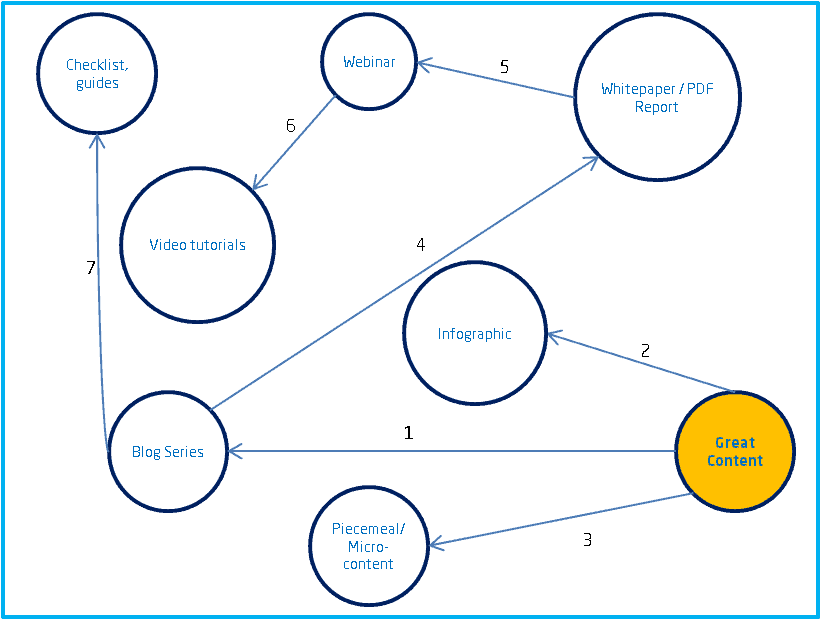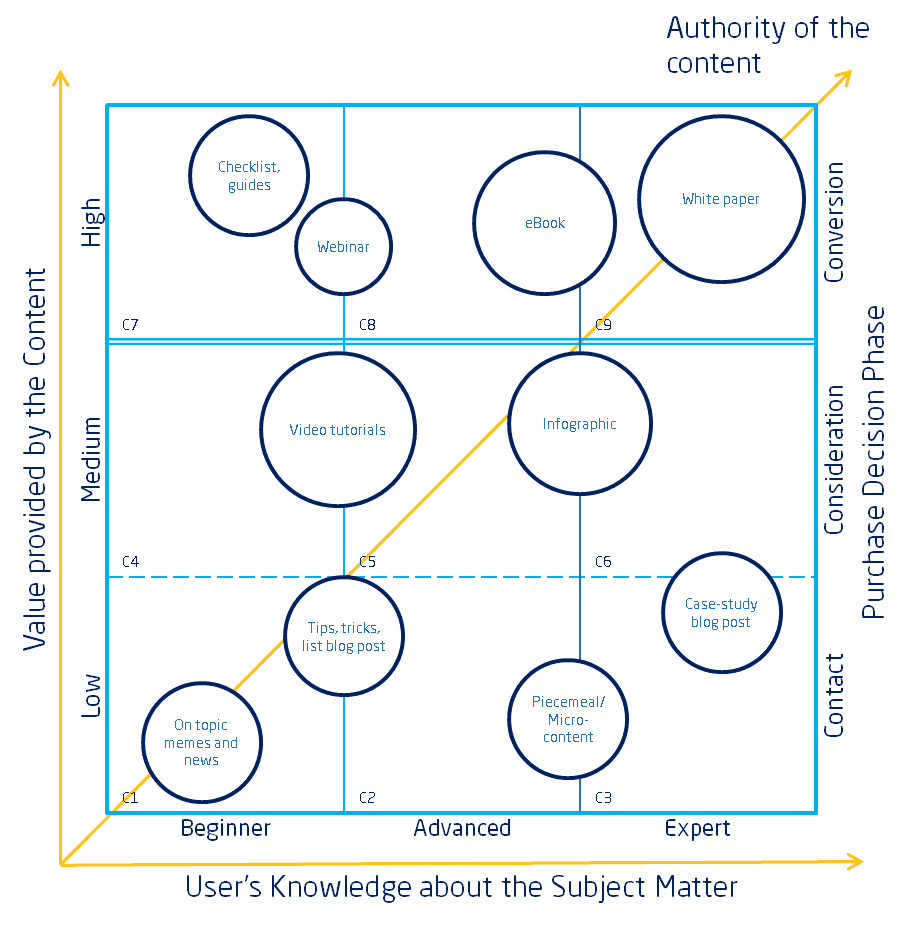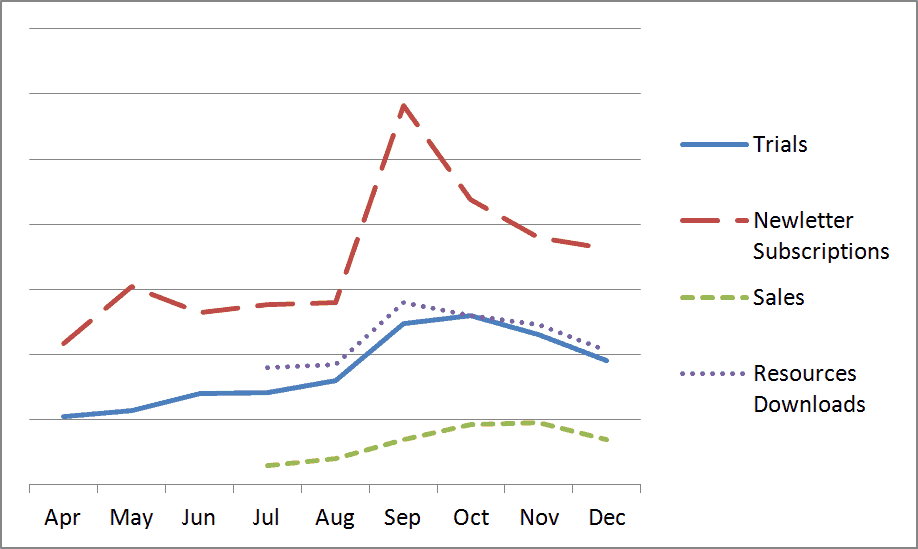Before we go into the concept of content repurposing, let’s do a quick test; write down the top five articles that you’ve ever published.
Do you have them? Chances are you know them off the top of your head. These are your hall-of-famers, your best work. Now think - how many of these five articles did you really get the most out of?
When I say, “get the most out of” what I mean is, “How many of them did you make available to as much of your audience, over as many channels and platforms, in as many formats, and for any many purposes as possible?” If you said all of them, then you are already a master of repurposing, but for the rest of us mortals, I’ve created a matrix to help guide you in your content repurposing.
To start off, what exactly is content repurposing?
Here’s my definition:
Content repurposing is the act and process of altering a content piece in order to reach a new audience and / or achieve a new goal with the same, or new, audience.
Here is a list of reasons why you should regularly repurpose your content.
When you repurpose content you make it accessible over new channels and in new formats. The direct benefit of that is increased reach.
For example, sharing all the key points from a blog post in a piecemeal fashion over a regular period of time (daily, for instance) will inevitably bring more people back to your article. Just as important, though, it gives you the opportunity to promote your article to people who may have missed your original promotion push when the article first published.
Let’s face it: nobody should be creating mediocre content. On the other hand, great content should be made accessible to as many people as possible. In content marketing theory, quality should outperform quantity; however, in practice, you are pressured to produce more than your competitor, which is done at the cost of quality. Repurposing your content allows you to scale the quantity of your high-quality content.
What’s worse than mediocre content? No content. Depending on the type of topics you write about, the amount of interesting and engaging ideas you can think of is limited. With content repurposing, you will be able to maximize output from each of your great ideas.
Here’s a term worth looking up: “the mere-exposure effect”. It’s a psychological phenomenon by which people tend to develop a preference for things merely because they are familiar with them. By simply making your content available on many channels you increase the chance that any one person sees your content on different occasions, and each time that happens, you are creating likeability for your content and for your brand.
Additionally, by repurposing your content, you not only get to tell one message multiple times but in different ways. So if your target audience wasn’t convinced in one approach, you get the chance to succeed in another.
Every content piece that you repurpose saves you from making a new one from scratch. You save a lot of time, energy, and trial and error by taking what works and repurposing it. Great content takes a lot of effort to make and, after all the effort and time you put into creating great content, you would be foregoing a lot of untapped value if you are not repurposing it.
Let’s say you conducted a survey about a topic that your customers are very interested in. It took you a week to make the questionnaire, three to collect the data and another two to write a hall-of-famer article about it.
Here’s a hypothetical series of steps you can take after your first promotion push:
And so on and so forth. Through this process you can go from one content piece to seven, effectively increasing your ROI in addition to benefiting from the other four points stated above.

Ideally, you should only be creating high quality, evergreen content that adds value to your audience. So yes, in that case, you should be repurposing all of your content to get the most out of it.
In practice, however, we all face time constraints and end up publishing content that we could have made better given more time and resources. So choose the ones you are proud of and over time you will have a rhythm of developing great content and then repurposing the hell out of it.
When deciding which content you should repurpose, look to your audience. The number of shares and other social signals are a good indication of how much your audience likes a particular post. Traffic is a good indicator as well, but keep in mind that traffic is influenced by virality and social signals. Conversion is also a good indicator.
There is no single right or wrong way to go about it, however, there are some things you can keep in mind.
Take a look at the Content Repurposing Matrix below. It explains the relationship between target audience, purchase decision phase, and value that your content needs to provide to advance them through stages.
 The axes are as follows:
The axes are as follows:
Users' knowledge about the subject matter is an independent variable that directly influences the level of complexity a content piece needs to have in order to appeal to your audiences. Over time your audience will increase their knowledge about the subject matter and move from left to right on the “user’s knowledge” axis. The main implication of that is you need to provide basic, advanced and expert level content through your channels.
Since the content is intended to take the audience through the purchase decision phases, you are in essence taking them from bottom to top on the y-axis. Only value-adding content will take the user through the stages of a purchase decision.
The goal of content marketing is to get traffic to your website, convert the traffic to leads and nurture the leads so that they make the purchase. So then, the content you create needs to fulfill all of these phases. Consequently, you have content that is good for generating traffic (contact), time investment (consideration) and commitment (conversion).
As you can see in the Content Matrix, memes, piecemeal/micro content and tips and tricks blog posts are meant for generating traffic, while video tutorials, infographics and case study blogs will make your audience spend more time on your channels. Given that all of your content is remarkable, the audience will want to access content on the other side of a gated landing page such as a webinar or a whitepaper on the topic that they are interested in, at which point a valuable lead has been generated.
In September 2013, linkbird launched a campaign with the goal of generating more traffic, leads and eventually sales in the German market. Here’s how we used content repurposing to achieve these goals.
Core idea of the campaign:
In the beginning of August 2013, we created the survey questionnaire and sent it to our network. Within three weeks we reached the sample size representative of the target population, after which we did the following things:
By repurposing the content six times we were able to achieve very good results. The campaign was launched in the first week of September, after which we received a strong boost to our traffic.

Other key performance indicators also shot up shortly after the launch of the campaign. Newsletter subscriptions experienced a sharp rise along with resource downloads. Subsequently, trials and sales went up.

At linkbird we repurposed the survey results to
Repurposing your content will allow you to expand your reach, scale the volume of high-quality content, avoid content burnout and increase the ROI of your content marketing.
With so many potential benefits, it’s tempting to apply this process to everything you create. Remember, repurposing should only be used with your very best content. Examine social signals, traffic generation, lead generation and conversions to inform you of your best performing content- the ideal candidate for repurposing.
Finally, tie every new repurposed content piece back to your goals of reaching new audiences with different messages across a variety of platforms. As with any campaign, monitor your pre-defined KPIs (e.g. traffic, engagement, conversion) and make adjustments along the way as you learn new insights about what’s most effective in each community.
What kind of repurposing successes (or failures) have you seen recently in content marketing?